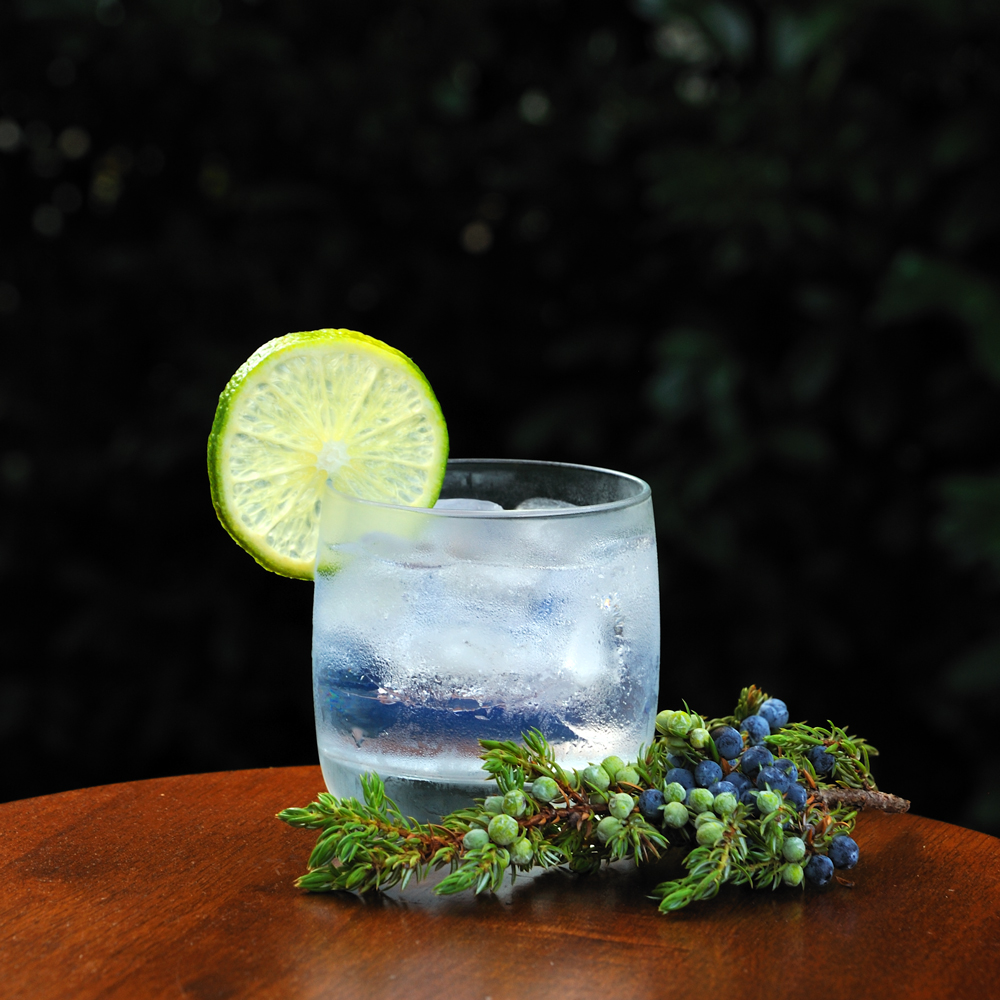
Gin and tonic, a timeless and uncomplicated gin-based cocktail, has secured its place as one of the world’s oldest and most beloved libations. The significance of this classic transcends our planet, even taking a whimsical, intergalactic role in Duglas Adams’ novel, “The Restaurant at the End of the Universe,”: «85% of all known worlds in the Galaxy, be they primitive or highly advanced, have invented a drink called jynnan tonnyx, or gee-N’N-T’N-ix, or jinond-o-nicks, or any one of a thousand or more variations on the same phonetic theme. The drinks themselves are not the same, and vary between the Sivolvian ‘chinanto/mnigs’ which is ordinary water served at slightly above room temperature, and the Gagrakackan ‘tzjin-anthony-ks’ which kills cows at a hundred paces; and in fact the one common factor between all of them, beyond the fact that the names sound the same, is that they were all invented and named before the worlds concerned made contact with any other worlds.”
As for our earthly understanding, the genesis of the gin and tonic is intimately tied to 19th-century colonialism, malaria, and the British Empire’s relentless expansion. The East India Company, acting on behalf of the British Crown, navigated the complexities of the Indian subcontinent. In these tropical regions, malaria posed a considerable threat, particularly to European inhabitants. To combat this disease, quinine emerged as a primary treatment. Dr. George Cleghorn, a Scottish physician, proposed for malaria prevention.
Tonic water, a quinine-infused solution, was developed as an essential prophylactic remedy for the Presidency armies, the military units of the East India Company. Yet, quinine-laden tonic possessed a distinctly bitter and unappealing taste. Here, the officer’s rations and the gin boom in England came to the rescue. Gin had already seen substantial popularity, and with the advent of the rectification column and the emergence of London Dry Gin at the turn of the 19th century, it enjoyed a resurgence.
Officers in the Presidency armies creatively blended the bitter tonic with gin from their rations, sugar, and lime juice, giving birth to the iconic gin and tonic cocktail. This refreshing elixir quickly transcended military boundaries, finding favor among the European population in India and beyond. As tonic water transitioned from a medicinal necessity to a gastronomic delight, the quinine concentration was adjusted, resulting in a milder, pleasantly bitter taste.
In the contemporary era, a plethora of tonic water variants are available from various producers, each offering a unique twist. Some, often the more budget-friendly options, may employ aromatic additives in place of quinine, which I do not recommend. Furthermore, tonic waters can vary significantly in sweetness, with some employing sugar substitutes. The choice of tonic plays a pivotal role in shaping your cocktail’s overall flavor. Be discerning in your selection to ensure it complements your taste preferences, for this choice constitutes half of the cocktail’s essence. Equally vital is your choice of gin, and for in-depth insights into this aspect, you can refer to my gin article.
In essence, crafting the perfect gin and tonic is as straightforward as it is rewarding. The choice is yours, a symphony of gin and tonic mingling in a glass over ice cubes, the proportions harmonizing with your unique palate. Garnish with a slice of lime, or if your fancy leans in that direction, perhaps a slice of lemon. The latter, although a relative newcomer to the world of gin and tonic, has firmly secured its place, imparting a subtle citrus zing that many find irresistible.
The allure of the gin and tonic resides in its uncomplicated elegance; a simplicity that effortlessly unveils the distinct flavors of its key constituents. However, the human propensity for complexity has ushered in a wave of innovation, expanding the gin and tonic’s horizons. Today, your options extend to a myriad of flavors, including orange, star anise, thyme, grapefruit, rosemary, cucumber, strawberry, basil, and even a hint of chili. Don’t forget the realm of potential mix-ins like various fruit juices, grenadine, and even tea. The variety of garnishes and accents is a testament to the adaptable nature of this timeless cocktail, with each creation being a matter of personal taste.
The cocktail’s name, a straightforward homage to its core constituents, undergoes linguistic variations. In English-speaking territories, it is affectionately abbreviated to “G and T.” Across diverse cultures, the nomenclature takes distinctive forms: “gin-tonic” in Germany, Italy, France, Spain, Turkey, and Japan, affectionately rendered as “gin tonikku” in Japanese phonetics. The Belgians and the Dutch know it as “ginto,” and the Nordic regions simply “GT.” Nonetheless, I hold the belief that wherever you may find yourself, uttering “gin and tonic” in a bar is akin to an unspoken pact—your drink is on its way.
Now, a brief note on those pre-mixed gin and tonic beverages housed in convenient tins. Unfortunately, these often lack the genuine essence of a gin and tonic. They typically contain diluted ethanol flavored with aromatic additives, a far cry from the authentic taste.
For the purest gin and tonic experience:
Ingredients:
-1 part to 3 parts London Dry Gin (to taste)
-3 parts Tonic water
Process:
In a grass filled with ice cubes, add gin and tonic.
Garnish – a slice of lime.
Drinkware:
Highball glass
Finally, mark your calendar for October 19th, as it is World Gin and Tonic Day—an ideal occasion to celebrate this refreshing libation with friends, family, or simply with a moment of self-indulgence. Cheers to simplicity and the timeless charm of the gin and tonic!
Visit my online store for a unique poster featuring this cocktail, along with many other beautiful cocktails and other wine-related subjects.
It’s the perfect way to add a touch of sophistication to your kitchen or bar. Click here to shop now!